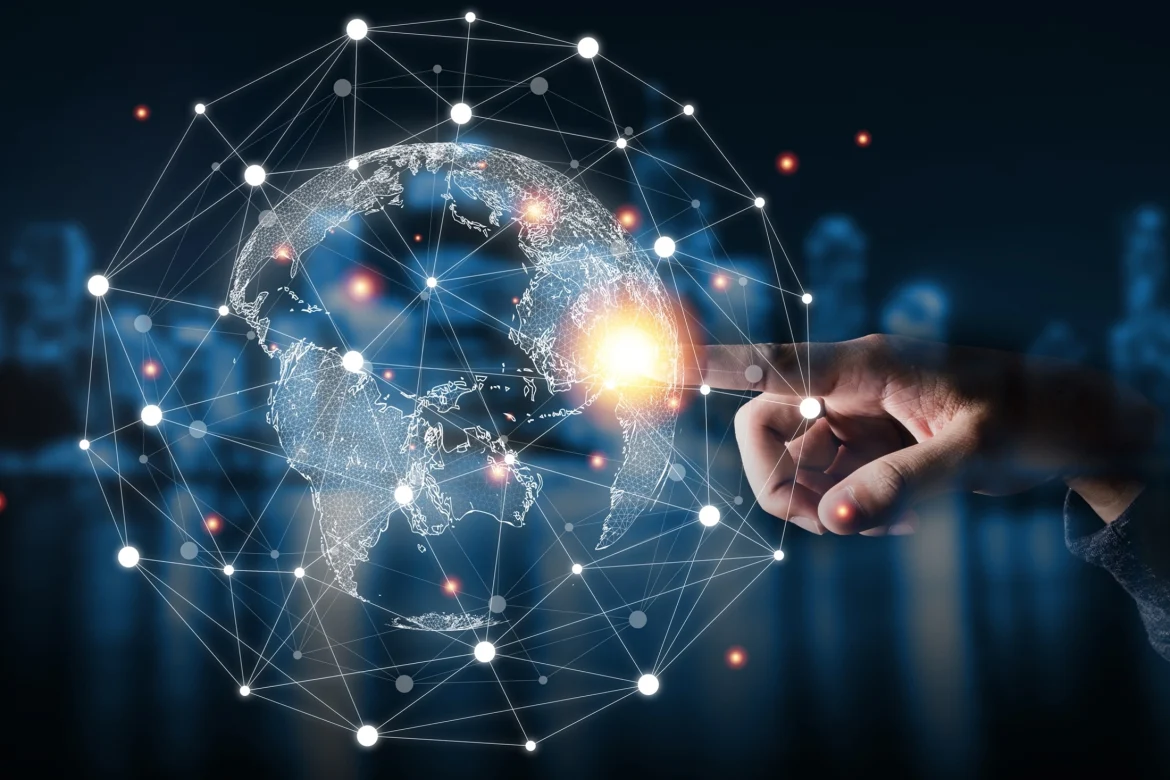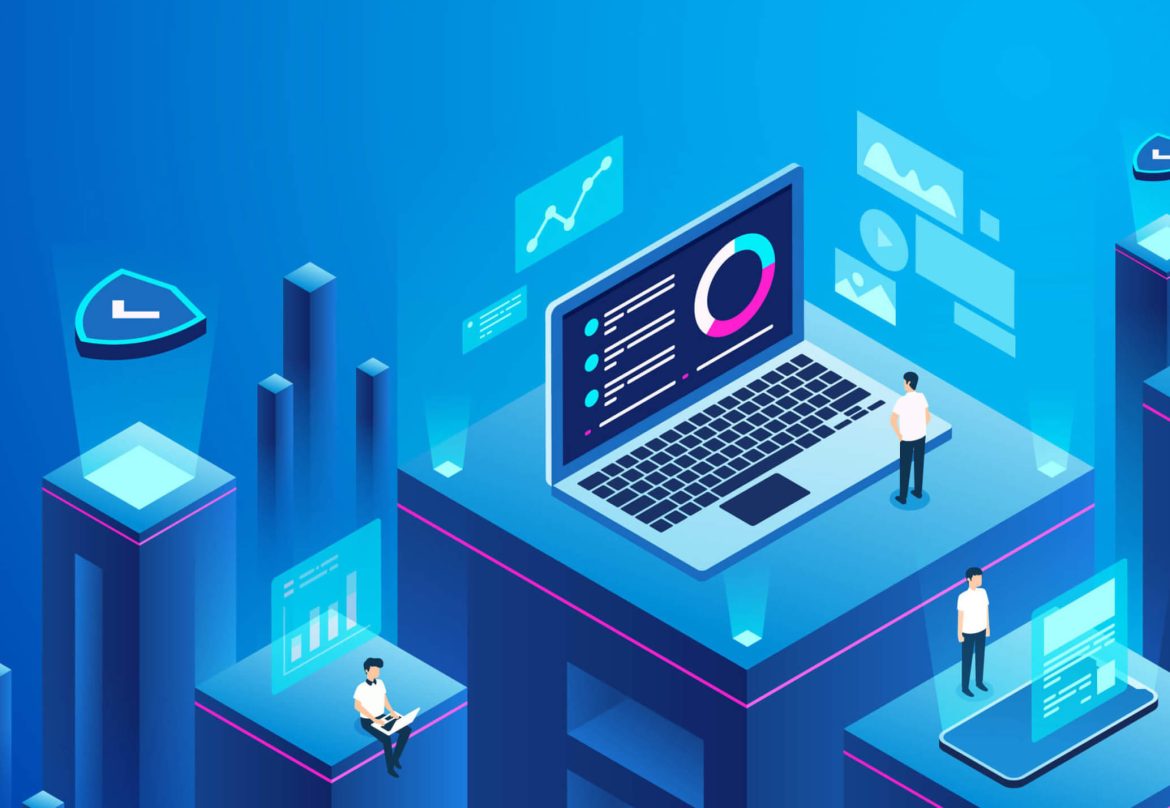The metaverse is the concept of a persistent, immersive digital environment where people interact through avatars, work, learn, have fun, and even own digital property. Although the term originated in the 1990s, it has become a reality today thanks to VR, AR, blockchain, and cloud technologies.
The foundation of the metaverse is virtual and augmented reality. Headsets like the Meta Quest 3 or Apple Vision Pro provide high-quality immersive experiences. Users can attend concerts, meet friends, or train in simulations without leaving home.
Blockchain and NFTs play a key role, allowing users to own digital assets—from avatar clothing to virtual real estate. Platforms like Decentraland and The Sandbox are already selling land plots for cryptocurrency, and brands are opening virtual stores.
The metaverse is changing the way we work. Virtual offices allow teams from different countries to collaborate in a 3D space using gestures, voice, and visual tools. This increases engagement and creativity compared to video conferencing.
In education, the metaverse opens up new possibilities. Students can explore Ancient Rome, conduct chemistry experiments without risk, or study anatomy by peering inside the body. This approach makes learning interactive and memorable.
New Technologies
Advertising
Advertising
In the face of the climate crisis, sustainable technologies are becoming not just a trend, but a necessity. They aim to reduce carbon footprints, use resources efficiently, and minimize waste. From solar panels to biodegradable packaging, these solutions form the foundation of a green economy.
Renewable energy is one of the main drivers of sustainability. Solar and wind power plants are becoming cheaper and more efficient. New technologies, such as perovskite solar cells, promise efficiencies of over 30%. And energy storage systems based on solid-state batteries address the intermittency of renewable energy sources.
In transportation, electric vehicles (EVs) have already entered the mass market. But the future lies with hydrogen fuel cells and electric aviation. Companies like Airbus are developing zero-emission aircraft, and startups are creating electric trucks for long-haul transportation.
A circular economy is another key principle. Instead of the linear “production-consumption-disposal” model, a closed-loop approach is proposed, where waste becomes a resource. For example, recycled plastic is transformed into clothing, and organic waste into biogas or fertilizer.
In agriculture, sustainable technologies include vertical farms, hydroponics, and precision farming. Drones and sensors analyze soil and plant health, reducing water and pesticide use by 30-50%. This is especially important in times of drought and population growth.
Advertising
Neural interfaces are technologies that directly connect the human brain to computers or other devices. They can read neural activity, convert it into commands, and transmit signals back to the brain. This field is rapidly developing thanks to advances in neuroscience, microelectronics, and machine learning.
One of the pioneers in this field is Neuralink, founded by Elon Musk. Its implantable chips can record the activity of thousands of neurons with high accuracy. The first clinical trials have already begun: paraplegic patients are learning to control a cursor or a robotic arm using just their thoughts.
There are also non-invasive neural interfaces, such as EEG helmets. Although less accurate, they are easy to use in everyday life. Today, such devices help people with cerebral palsy communicate, and developers are creating brain-controlled games and apps. In the future, they may become part of everyday life—for example, for controlling a smart home without voice or gestures. The primary goal of neural interfaces is to restore lost functions. People with spinal cord injuries, blindness, or deafness can regain mobility, vision, or hearing. Research shows that stimulating the visual cortex can create simple images, and auditory implants have been helping the deaf for decades.
Advertising
Quantum computing is one of the most promising technologies of the 21st century. Unlike classical computers, which operate on bits (0 or 1), quantum machines use qubits that can exist in superposition—that is, be both 0 and 1 simultaneously. This enables them to solve problems inaccessible to even the most powerful supercomputers.
The principle of quantum entanglement allows qubits to instantly influence each other, regardless of distance. This property underlies quantum algorithms such as Shor’s algorithm for factoring large numbers or Grover’s algorithm for searching unordered databases. These algorithms have the potential to revolutionize cryptography, optimization, and molecular modeling.
Today, quantum computers are still at the Noisy Intermediate-Scale Quantum (NISQ) stage—they contain from 50 to several hundred qubits but are susceptible to errors due to decoherence. Nevertheless, companies like IBM, Google, Rigetti, and IonQ are already providing cloud access to their quantum processors, allowing researchers to experiment with real-world systems.
One of the key challenges is creating error-tolerant quantum computing. To this end, quantum error correction methods are being developed that require hundreds of physical qubits to create a single logical qubit. While this remains technically challenging, advances in superconducting circuits, ion traps, and topological qubits offer hope for a breakthrough in the coming years.
Advertising
Artificial intelligence (AI) has come a long way from simple image recognition algorithms to complex systems capable of making decisions in real time. Modern AI models, especially those based on Transformer architectures, are demonstrating the ability not only to process massive amounts of data but also to generate content, engage in dialogue, and even display rudimentary reasoning. These advances are opening new horizons in medicine, education, finance, and other fields.
One of the key breakthroughs is the emergence of large-scale language models (LLMs), such as GPT-4, Llama, and Claude. They are trained on trillions of tokens and are capable of understanding context, generating code, writing essays, and answering complex questions. However, their “intelligence” remains statistical: the model doesn’t “think,” but rather predicts the most likely sequence of words. Nevertheless, to the user, this often appears as intelligent behavior.
Multimodality is becoming an important area of AI development. Modern systems can simultaneously process text, images, audio, and video, making them versatile assistants. For example, a model can analyze an X-ray, describe it in natural language, and offer a diagnosis based on medical data. Such systems are already being implemented in clinics and diagnostic centers.
The ethical aspects of AI remain a major concern. Algorithms can reproduce biases embedded in training data, leading to discrimination or erroneous decisions. Therefore, developers are increasingly implementing “explainable AI” (XAI) mechanisms, which allow for an understanding of why a model made a particular decision. This is especially important in legal, healthcare, and banking.
Advertising






